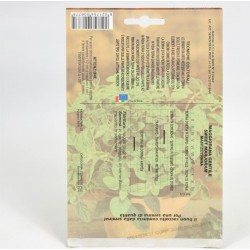Asparagus umbellatus plant
Generality of the Asparagus umbellatus plant:
Asparagus plants, perennial shrubs with a climbing or drooping shape, are very interesting for their elegant ornamental foliage. It produces small pinkish-white flowers, gathered in inflorescences, followed by red berries. The Asparagus plant is a widely grown species in the apartment, even if it does not tolerate heated environments in winter and is better suited to verandas or in any case cool and very bright environments.
-disponible IN 5/7 days
- jar 12cm, height 35cm
Sale of the Asparagus umbellatus plant, available in the following formats:
- jar 12cm, height 35cm
Generality of the Asparagus umbellatus plant:
The Asparagus plant is not only the delicious bud that we all enjoy but it is also an appreciated plant that we know by the name of asparagine used only as a decorative plant but also as cut fronds to adorn bouquets of flowers. The genus Asparagus belongs to the Asparagaceae family and includes numerous species of deciduous perennial plants, mostly climbing plants, native to the sandy or coastal areas of Europe, Asia and Africa. They are sufruticose perennials (which have only the woody basal part as the new shoots are herbaceous), bushy with rhizome which is nothing more than the stem transformed into a reserve organ that allows the plant to survive even in extreme cultivation conditions ( cold and drought). Almost all species are dioecious, which means that there are plants that bear only male flowers and plants that bear only female flowers. The plant blooms during the summer, producing small white-pinkish-yellowish flowers, slightly perfumed, star-shaped with six tepals. The fruit is a berry that is red when ripe and contains small triangular black seeds of a shiny black color.
Cultivation and Care of the Asparagus umbellatus plant:
The Asparagus plant can tolerate temperatures around 10 ° C in winter. It does not tolerate dry heat, which facilitates its attack by scale insects. Arrange the plant in partial shade, with the absolute exclusion of direct sunlight. In winter it is sufficient to keep the soil moist, without however giving rise to dangerous stagnations, in summer it requires decidedly abundant watering. The humidity must be high: the atmosphere is too dry, especially in the apartment. Plant in good, well-drained peaty soil. From late April until late September, a liquid fertilizer should be given every 15 days. In case of yellowing of the leaves, add an iron-based product to the normal fertilizations.

















